Samantha King, left, and her labrador, Nala, with Anna and partner Josh Paynter; watching horses in the dusty yards.
Photography Allie Lee
Sign up to our mailing list for the best stories delivered to your inbox.
There’s movement at the station as Anna Uhrig and her team start training, and eventually rehoming, a mob of brumbies.
Words Louisa Harvey Photography Allie Lee
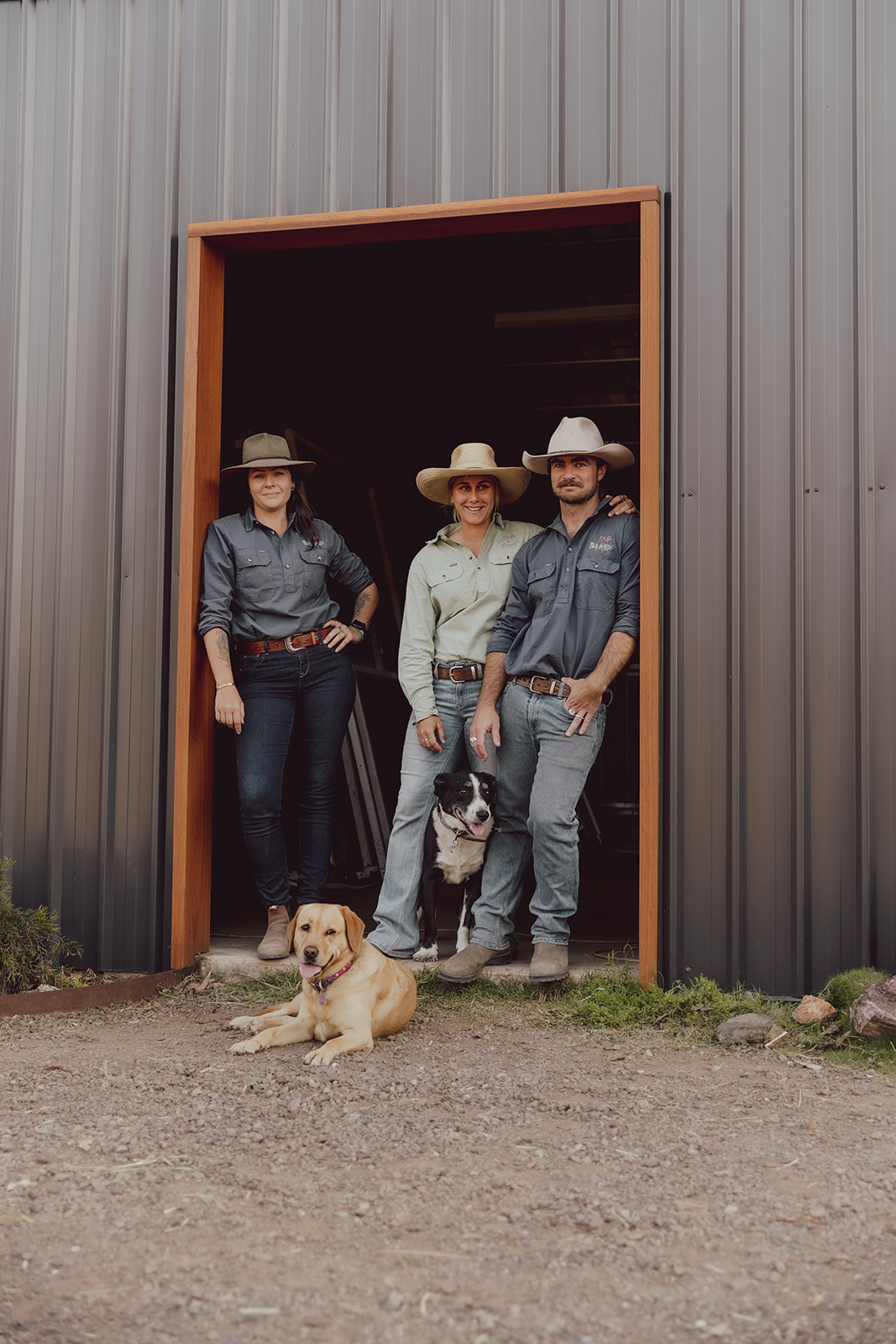
Samantha King, left, and her labrador, Nala, with Anna and partner Josh Paynter; watching horses in the dusty yards.
Photography Allie Lee
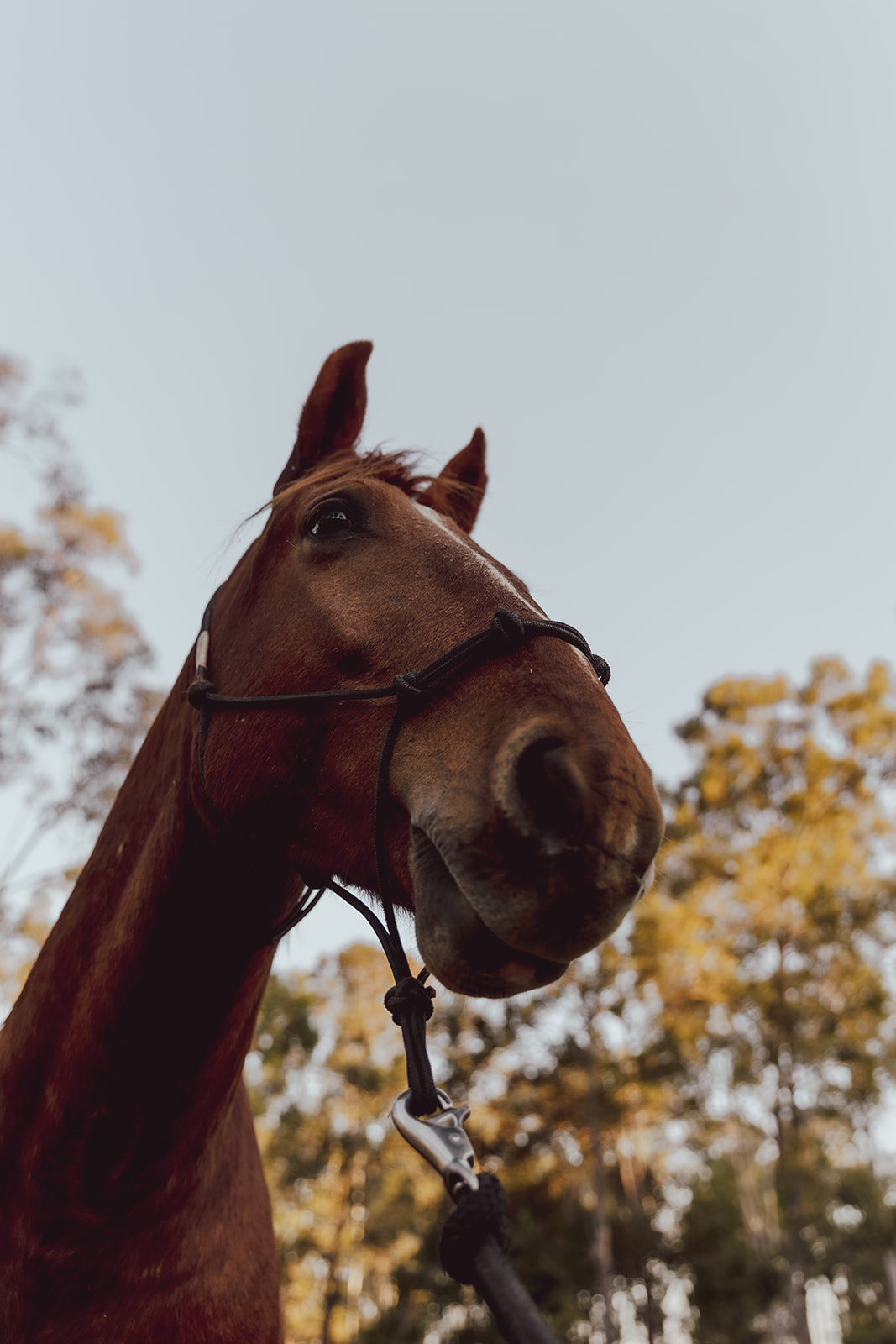
Learning to accept a halter.
Photography Allie Lee
Anna Uhrig has just returned to The Brumby Project HQ at Amamoor in the Sunshine Coast hinterland, after enjoying what she calls ‘downtime’: helping ringers with cattle work and weaning in Carnarvon, Queensland.
“Going out there, not even to run a camp — just to be out there — reignites my fire,” she says. Central Queensland holds a special place in Anna’s heart; it’s where she started her first, and favourite, brumby Riva, a two-year-old palomino mare.
“I broke my arm falling off her on the third ride and had to go to Roma Hospital,” says Anna, “but it makes our bond more memorable, and she’s my best horse now.”
Anna’s journey to becoming an advocate for Australian brumbies began with Riva in 2013. Now 30, she never imagined it would lead to her guiding a growing community of brumby lovers and rehomers. “We’re seeing more and more people wanting to rehome a brumby. It speaks for itself in what the horses do for the people,” Anna says.
As founder and CEO of The Brumby Project, Anna combines her passion for natural horsemanship with her work as an ecologist. The Brumby Project offers clinics, camps, horse-starting, and brumby rehoming. “The Brumby Project’s very refined compared to out bush, with luxuries like running water and shelter, but it means it’s more open to giving regular people a taste of what brumbies can offer,” she explains. Anna and her partner, Josh Paynter, run The Brumby Project from their 4.5 hectare property, approximately 40 minutes inland from Noosa.
“We live in a shed at the moment, so it’s very close quarters,” says Anna, “but none of this would have been possible without Josh. He’s laboured over the yards and facilities and put up with having horsey people at our house for many weeks of the year.” And when mobs of captured brumbies arrive for camps and clinics, Anna’s three brumbies, including Riva, must also share their neatly fenced yards, paddocks and arena with the newcomers.
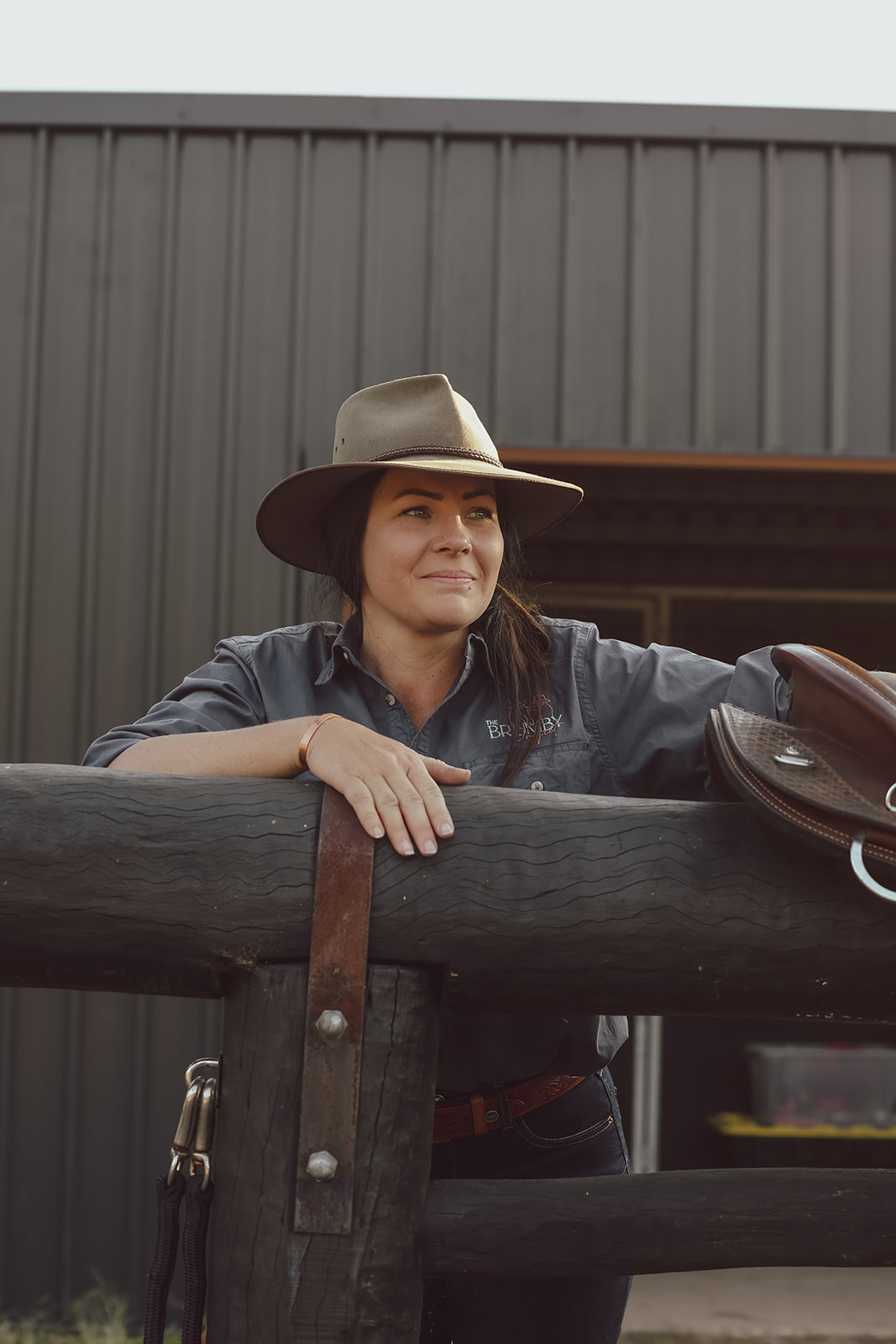
Samantha tells students to watch Anna carefully:
“She is so incredibly skilled, but also brave, strong and calm.”
Photography Allie Lee
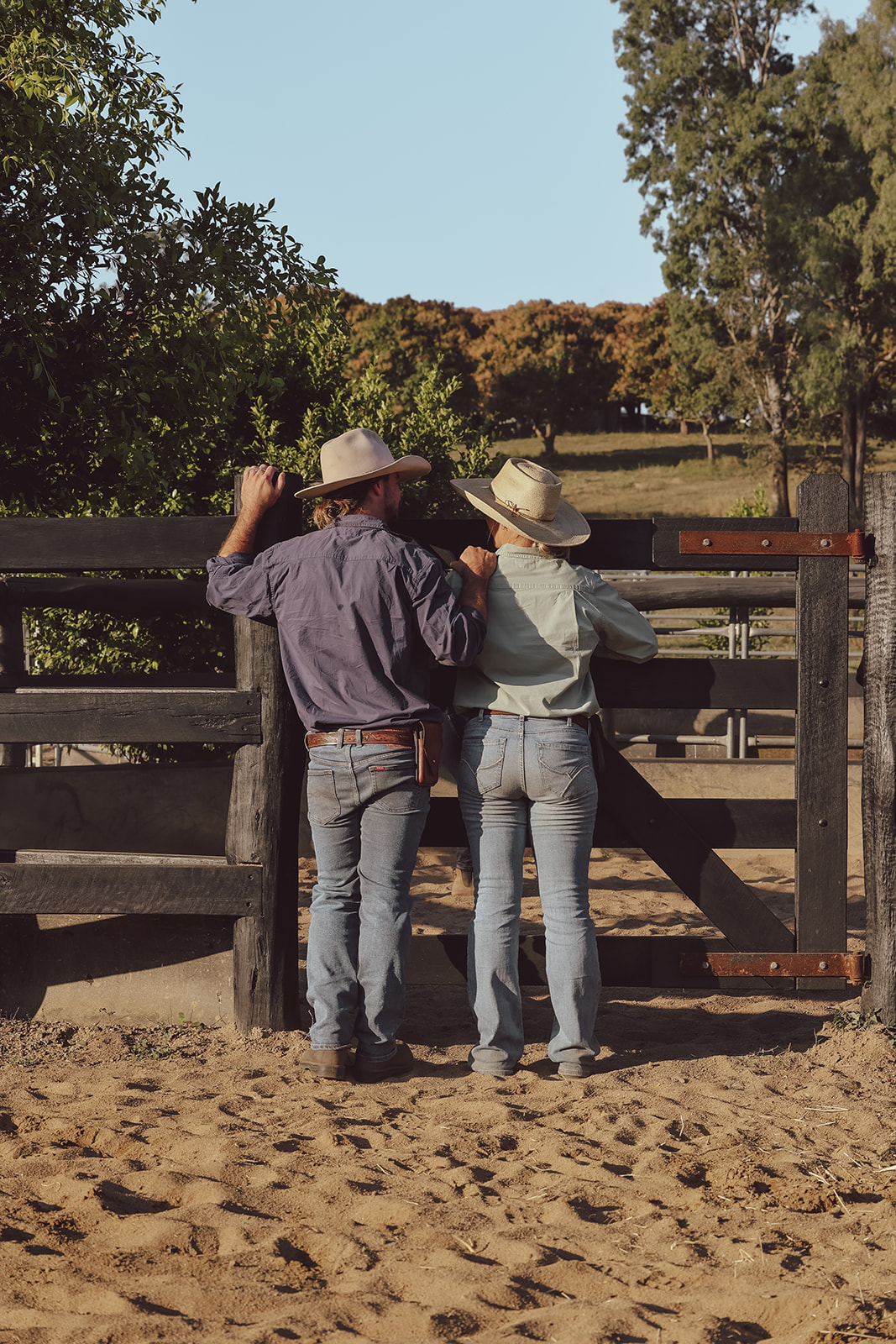
Josh supports Anna’s dreams and helped build all the facilities.
Photography Allie Lee
The Brumby Project’s 10-day camps equip students with essential horsemanship skills and opportunities to continue their journey with their brumby at home. “It’s not a day-by-day school where everyone ticks the same box on the day,” Anna explains. “Horsemanship is one thing, but there’s so much more you can’t put on paper. By the end of the camp, people tell me it was the best experience of their lives.”
Students camp on site, use a shared kitchen and facilities, and are welcomed as guests to Anna and Josh’s home. Friendships are forged over shared experiences.
One of Anna’s core philosophies is encouraging students to focus on their own progress rather than comparing themselves to others. Daily ‘toolbox talks’ set goals and share experiences, ensuring everyone moves at their own pace. “Halfway through the clinic, some people are saddling their horses, ready for a first ride. Other people are still trying to get a halter on,” says Anna. “We say to them, ‘Don’t compare yourself’, because it’s not helpful or realistic. You can work at 150 per cent, but your horse might not be ready.”
Samantha says she learned a lot about breaking brumbies from watching Anna. “I tell people at the camps, ‘If you see Anna get in the yard, you stop what you’re doing and watch’,” she says. “You should see her working a horse. She is so incredibly skilled, but also brave, strong and calm. She has the fight in her, but I’ve never seen her get angry or fall apart; she always sees it through.”
Anna admits she often finds the brumbies easier than the humans in lessons. “The most challenging thing is when people arrive with preconceived ideas about what they can do,” she explains. “Even if you’re a top-level eventer, how do you communicate with a horse that you can’t just go up to and pat or put a halter on?”
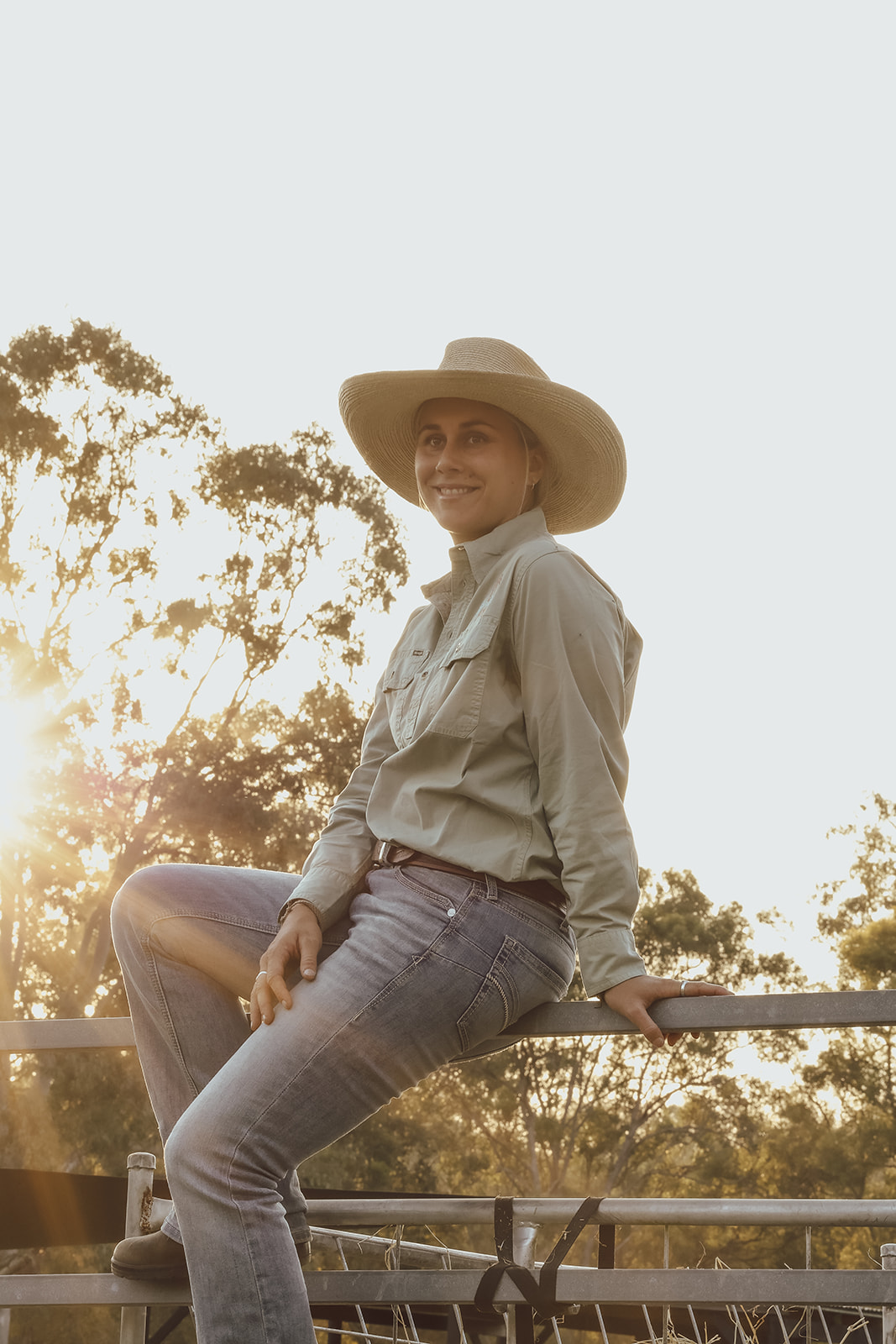
Anna Uhrig, 30, began working with brumbies more than a decade ago.
Photography Allie Lee
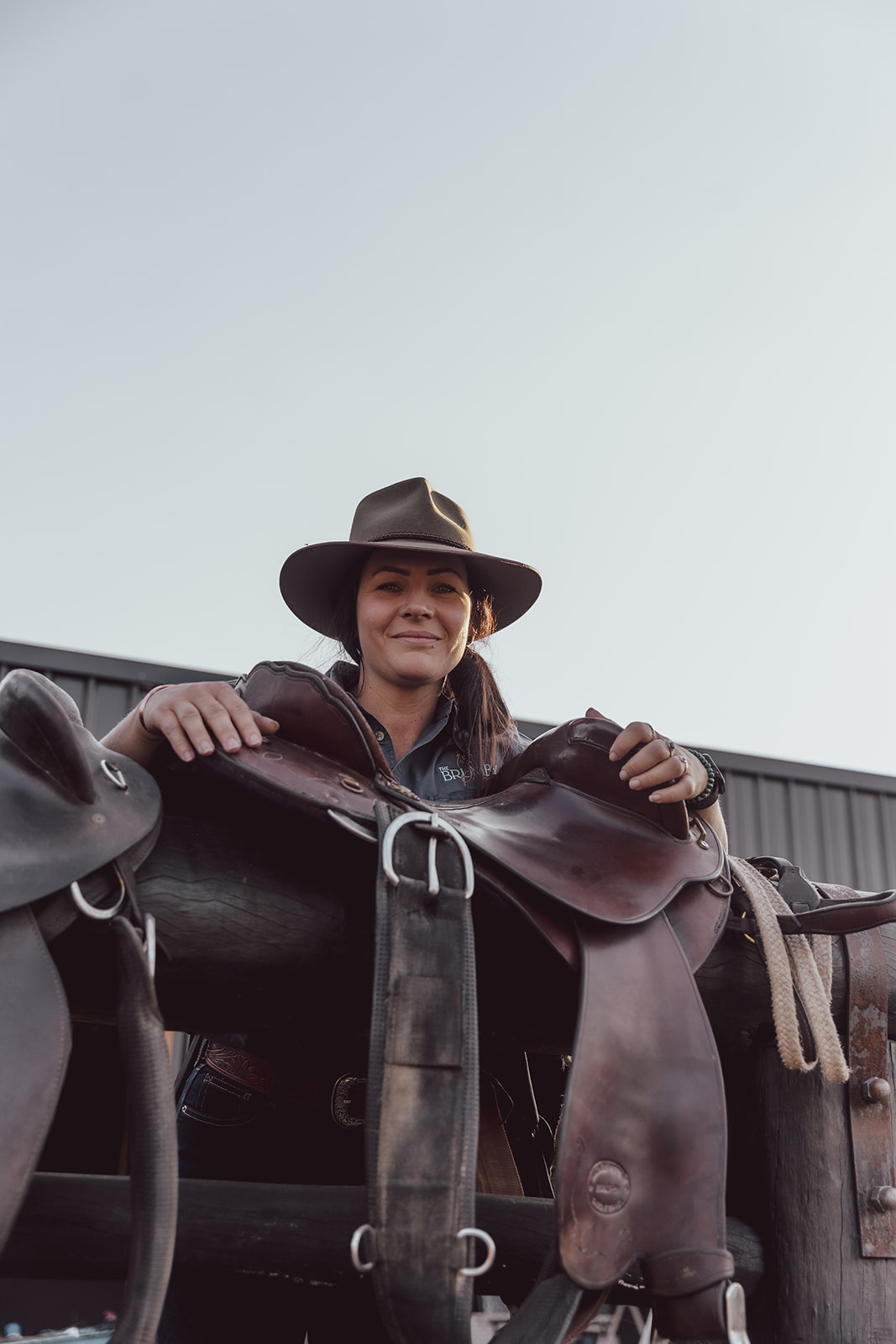
Samantha in the training yards.
Photography Allie Lee
The pressure of ensuring everyone meets the same benchmark after 10 days is significant, though Anna will never show it. “Anna is like a brumby mare,” says Samantha. “She’s stoic, fiercely protective and tenacious. Her assertive leadership draws you in.”
Anna’s dual role as an ecologist and brumby advocate offers a unique perspective on balancing conservation and animal welfare. She sometimes feels frustrated with extreme views on either side of the feral brumby debate. “I think a lot of people have preconceived ideas of what brumby rehomers or trainers should be. My views don’t necessarily line up with that — I’m not hardcore,” says Anna. “Running camps, rehoming brumbies and giving other people opportunities is where I can be most useful. And that, in itself, is a form of activism or conservation.”
Anna measures The Brumby Project’s success through its supportive community of past students. “It’s fun getting to know new people and horses, and we have a good active community of graduates,” she says. Past students and brumby rehomers often return to ride together and reconnect. “About 50 per cent of every group stays connected long term, and the other 50 per cent head off to do their own thing, which is fine too.” When Anna opened her gates for the annual Open Day and Brumby Show in September, dozens of horses returned.
Anna’s work with her students extends beyond the round yards, ensuring they are fully prepared for brumby ownership. “It’s not always roses,” she reminds her students. “At the very minimum, you need to be able to care for a brumby that might get injured or needs its feet or teeth checked,” Anna says. “It’s beautiful to rehome horses and save the brumbies, but what’s even better is making sure we’re doing it right.”
Head to our subscription page to order your copy of the Graziher x Rabobank 2025 diary featuring Anna!
For more information, visit thebrumbyproject.com.
Subscribe to Graziher and never miss an issue of your favourite magazine! Already a subscriber? You can gift a subscription to someone special in your life.
To hear more extraordinary stories about women living in rural and regional Australia, listen to our podcast Life on the Land on Apple Podcasts, Spotify and all major podcast platforms.
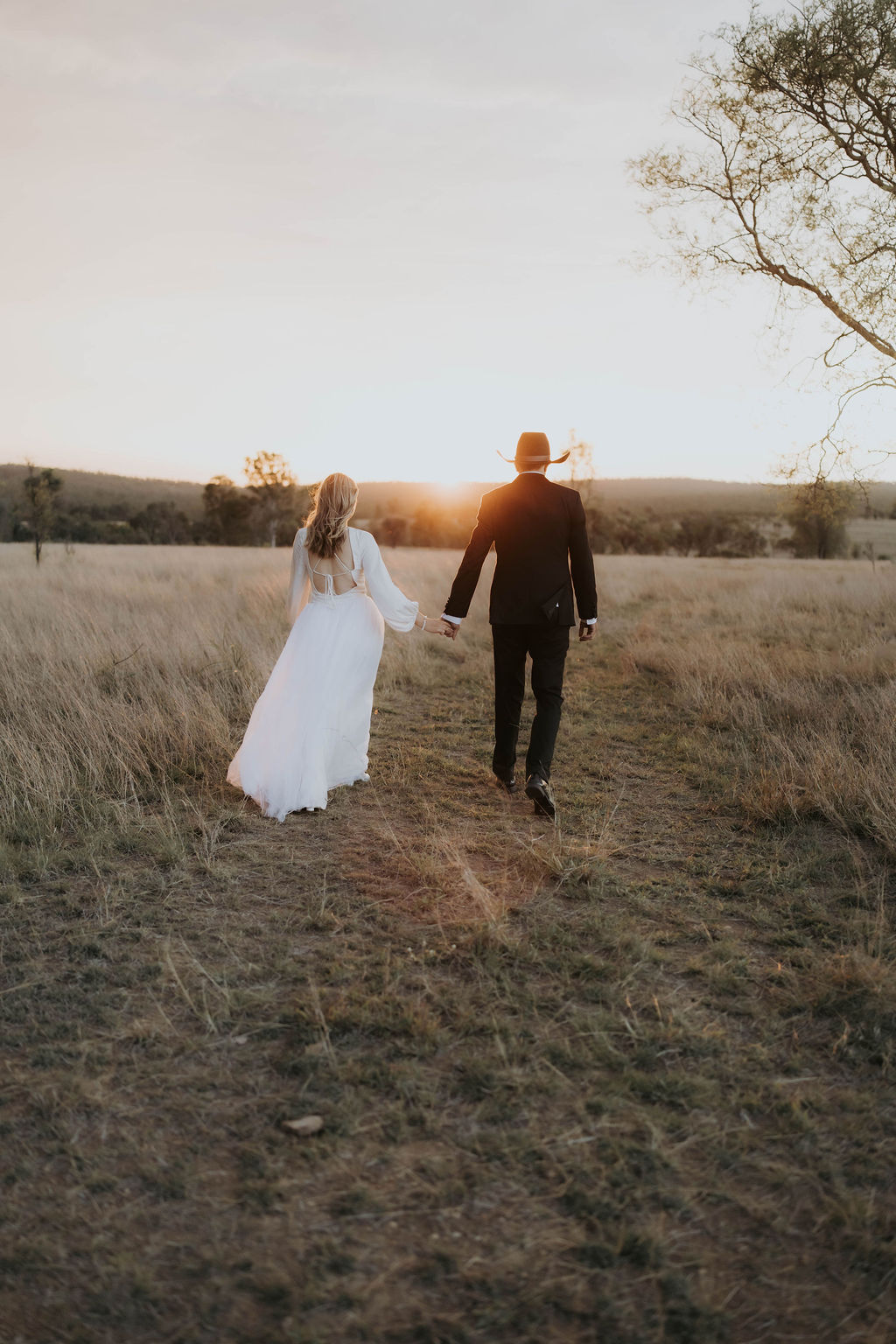
What began as a postcard-perfect country wedding soon became a story of survival, strength, and the unshakable heart of rural Australia.

Current custodian Penny Lamont says the heritage garden is designed for easy-care and dry times.